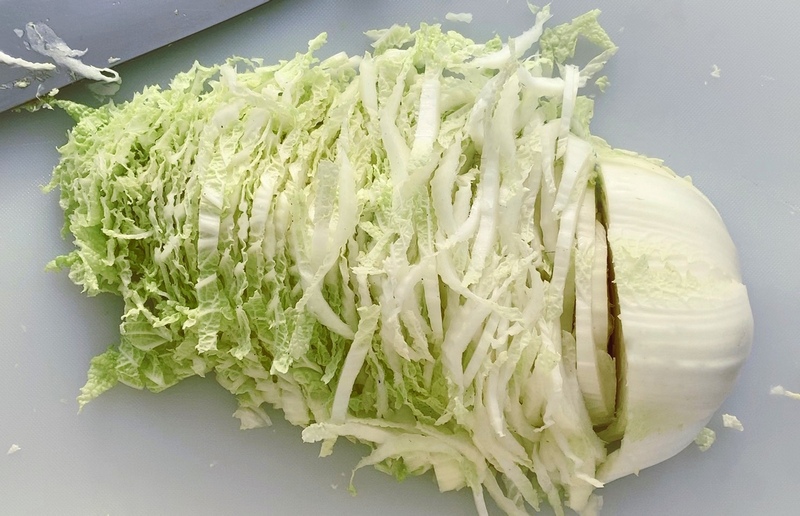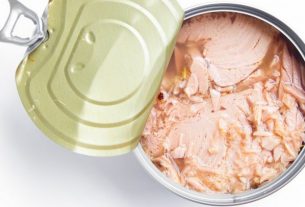One of the popular dishes attributed to German and Polish cuisines is sauerkraut. However, it is also known to have been influenced by a Chinese dish because of its natural way of preparation. Others also believed it originated from the Central and Eastern European cuisines.
Sauerkraut is pickled or fermented raw cabbage that has a very distinctive sour taste. It can also be stored for a longer period of time.
If you will ask if you can keep sauerkraut frozen, then certainly you can. Freezing sauerkraut will surely lengthen its storage life but like other food, it should be packed properly before putting it in the freezer.
Here is a complete guide to Sauerkraut that will give you much information about the recipe and other recommendations to storing and freezing sauerkraut.
What Is Sauerkraut?
History tells us that Chinese people are known for fermenting vegetables like cabbages in rice wine. Fermented cabbages are also considered one of their staple food. Its distinct sour taste and the sweetness of the fresh fermented cabbage has been popular to these days and has also inspired numerous cuisines internationally.
Sauerkraut is enjoyed as a side dish to popular cuisines. For example, the Germans like to serve it with bratwurst while in Poland it is matched with their famous Kielbasa sausages. Irish also love to serve it with their corned beef sandwich.
How Sauerkraut is Made
Traditionally, sauerkraut can be called pickled cabbages because it is a product of the pickling or fermentation method using lactic acid. Thinly sliced or shredded cabbages in salt and stored for fermentation.
During its fermentation process, it grows good bacteria like L. plantarum and L. mesenteroides which gives health benefits and its sour taste. The fermentation takes for about 3 weeks while kept in a room with temperature of about 65 degrees to 72 degrees Fahrenheit.
Homemade Sauerkraut
If you want to be sure of having fresh cabbages for sauerkraut, you can make your own it at home. The process is fast and simple.
Prepare a jar, a clean cloth, salt, a fresh cabbage head, and a weight.
Here are the steps in making your own sauerkraut:
- Prepare all the utensils you will need and be sure that everything is clean or sanitize to avoid contamination.
- Peel off the outermost layer of the cabbage and slice it thinly. You can use a vegetable shedder if you have one.
- Rinse the shredded cabbage thoroughly with water and drain it well.
- Place shredded cabbage in a big bowl and put 1 or 2 tablespoons of salt.
- Carefully knead the cabbages with clean hands for about 5 to 10 minutes. Be sure that the water in the cabbage are squeezed out.
- Placed the cabbage in a jar and be sure that it is totally submerged in its liquid.
- Cover the jar with clean cotton towel or cloth and sealed it tightly with a rubber band.
- Place the clean weight over it to help the cabbage become submerged in its liquid.
- Leave it for 24 hours but check the weight and press it from time to time to ensure that the cabbages are kept submerge. You may add more salty water if needed.
- Place it in a dry and cool room with temperature of around 65 degrees to 72 degrees Fahrenheit and leave it for at least 3 days to a month.

You now have a homemade sauerkraut. Sauerkraut can be good even when fermented for only 3 days but the longer the fermentation time, the better it is for the sauerkraut.
If you think it has been fermented enough, you can transfer the sauerkraut in a container with tight lid. You can now keep it in the fridge or place it in the freezer for a longer shelf-life.
Using Sauerkraut
Sauerkraut has become a popular side dish to various cuisines. Others also use it as a condiment to their dishes. It complements the taste of other dishes with sausages, pork, or other meat, and even in sandwiches. Some people also like to make soup with sauerkraut, stew it, or garnish it on their salads.
How to Freeze Sauerkraut
It is safe to keep sauerkraut in your cupboard for some time but if you want to lengthen its shelf life, it is best to refrigerate it or freeze it.
Sauerkraut can be best for about six months while refrigerated but it is always important to make sure of its freshness by checking it every time before eating it. You can check if it has changed color or smell and know when it is better to discard it.
If you want to freeze it, pack the sauerkraut properly in a tightly sealed container, or in a resealable freezer bag. Be sure to force the air out of the container or bag before closing or sealing it. Also, leave out a room for the food because it expands when it starts freezing.
Sauerkraut can have a longer shelf life when frozen than when refrigerated. It will remain best from 8 to 12 months while frozen.
Another option for freezing sauerkraut is by small amount. You can use the ice cubes tray to pre-freeze sauerkraut. Fill each cube with enough sauerkraut and have it frozen. Afterwards, draw it out of the cube tray, then place the cubed sauerkraut in an airtight freezer bag for storage and place it back in the freezer.
Freezing sauerkraut in small proportions will be handy if you need to use them later. You can simply get the amount you need, and you will not have to thaw all of it.
How to Defrost Frozen Sauerkraut
When you need to serve sauerkraut and yet it is still frozen, here are the tips on how you can thaw it.
Thaw frozen sauerkraut slowly in the fridge. You can thaw frozen sauerkraut overnight while in the fridge if you will need it in the morning. It is the best way to thaw any frozen food because while in the fridge, it is less likely to be contaminated. Once it is thawed, it will be good for about 5 days.
Thaw frozen sauerkraut on your countertop. You can leave frozen sauerkraut on your countertop to thaw for at least 2 hours. If you thaw it this way you have to consume it or cook it right away and never leave it there for more than 2 hours.
Thaw frozen sauerkraut using a microwave. If you need to thaw frozen sauerkraut quickly, using the microwave is the best option. Place the sauerkraut in a microwaveable dish or tray and microwave it for 10 to 20 seconds using time increments until it has been fully thawed.
Cook frozen sauerkraut into another dish. If you want to cook it into another dish like soup, stew or with meat, simply add the frozen sauerkraut into the dish you are cooking until is it thawed and cooked well with the dish.
Pros and Cons of Freezing Sauerkraut
When freezing any kind of food just like sauerkraut has benefits and drawbacks.
It is given that we freeze sauerkraut to lengthen its storage life and so, we can prepare more in advance and store it for some time until we want it.
The drawback, sauerkraut has grown good bacteria during fermentation, some of these good bacteria can die at freezing point thus, eating thawed sauerkraut will have less healthy benefits.
If you want to keep those good bacteria or probiotics on sauerkraut, it is best to just refrigerate it or store it at room temperature.
Related Questions
Here is more takeaway information for you.
Can you freeze cooked sauerkraut?
Definitely, you can freeze sauerkraut even after cooking it. Simply follow the proper way of packing and freezing dishes to be sure it will remain best after freezing. However, let the dish cool down at room temperature before freezing it. Freezing hot food is not recommended because it will affect the temperature inside the freezer and the food in it. Warm or reheat the dish with sauerkraut before serving.
Are there any other ways to preserve sauerkraut?
If you want to extend the sauerkraut’s storage life, freezing is the simplest and easiest way, but canning is another option to preserve sauerkraut.
Canning is done if you want to store sauerkraut for more than 3 months or so without opening it until then.
To can sauerkraut, you need to prepare clean and heated jars to package it. Heating the jars with the sauerkraut in it. It is a way to ensure that unwanted microorganisms are killed before storing it. It also helps to avoid spoiling it while being stored. The downside to heating is also killing the good bacteria on the food.
How can I tell if sauerkraut has gone bad?
Sauerkraut may smell a bit sour but not rancid, so it is easy to tell if it is already spoiled. If the smell has gone too rancid and if some of the cabbages turned brownish or has grayish spots, then you need to discard it.


